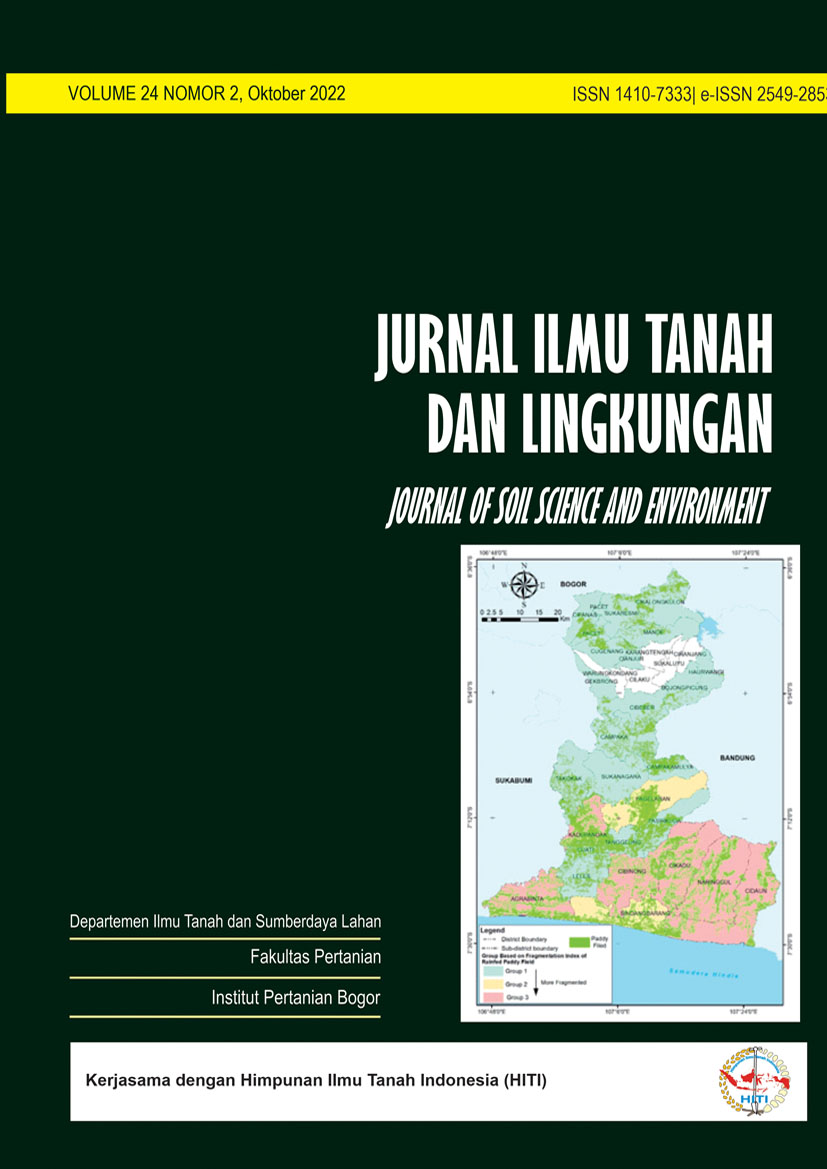Strategies to Control Paddy Field Conversion for Mantaining Food Sufficiency in Toba Regency
Strategi Pengendalian Konversi Lahan Sawah untuk Mempertahankan Swasembada Pangan di Kabupaten Toba
Abstract
The food crisis is an important issue faced by many countries, including Indonesia. Paddy field conversion caused decreasing rice production in many regions, one of which is in Toba Regency. Paddy field conversion should be controlled strategically to maintain the existence of the field for food production. This study aims: 1) to identify the conversion, availability, and rice needs 2) to identify the strengths, weaknesses, opportunities, and threats (SWOT factor) affecting paddy field conversion, 3) to generate strategies that control paddy field conversion. The SWOT factors were identified through descriptive methods, literature studies, and interviews. The strategies were constructed using a hybrid Analytical Hierarchy Process (AHP) and SWOT method. The results showed that rice availability decreased by -7,030 and demand increased by 4,001 tons between 2010 and 2020 due to paddy field conversion by 3,529 ha and increasing population. The main strength to be considered for controlling paddy field conversion is managing rice land, while the main weakness that might hinder the strategy is the low level of farmer education. Moreover, the main opportunity is supporting accessibility, and the main threat was regulation concerning sustainable agricultural land. The essential strategies to control paddy field conversion in Toba Regency include Land Protection Regulation, the subsidy of production input to farmers, and use of the local government budget to build agricultural infrastructure.
Downloads
References
Arouna, A., K.P. Devkota, W.G. Yergo, K. Saito, B.N. Frimpong, P.Y. Adegbola, M.E. Depieu, D.M. Kenyi, G. Ibro, A.A. Fall and S. Usman. 2021. Assessing rice production sustainability performance indicators and their gaps in twelve sub-Saharan African countries. Field Crops Research, 271(8): 1-16
[BPS Pusat] Badan Pusat Statistik Pusat. 2010. Luas Lahan Sawah Tahun 2010. BPS. Jakarta.
[BPS Pusat] Badan Pusat Statistik Pusat. 2020. Luas Lahan Sawah Tahun 2020. BPS. Jakarta.
[BPS Sumut] Badan Pusat Statistik Sumatera Utara. 2010. Sumatera Utara dalam Angka 2010. BPS Toba. Balige.
[BPS Sumut] Badan Pusat Statistik Sumatera Utara. 2020. Sumatera Utara dalam Angka 2020. BPS Toba. Balige.
[BPS Toba] Badan Pusat Statistik Kabupaten Toba. 2020. Toba dalam Angka 2020. BPS Toba. Balige.
Dwinanto, A.A.P, K. Munibah dan U. Sudadi. 2016. Model perubahan dan arahan penggunaan lahan untuk mendukung Ketersediaan Beras di Kabupaten Brebes dan Kabupaten Cilacap. Tataloka, 18(3): 157-171
Gallego-Ayala, J. and D. Juízo. 2011. Strategic Implementation of Integrated Water Resources Management in Mozambique: An A’WOT analysis. Phys. Chem. Earth, 36(14–15): 1103–1111.
Kurttila, M., M. Pesonen, J. Kangas and M. Kajanus. 2000. Utilizing the analytic hierarchy process (AHP) in SWOT analysis - A hybrid method and its application to a forest-certification case. Forest Policy and Economics, 1(1): 41–52.
Kontgis, C., A. Schneider, M. Ozdogan, C. Kucharik, V.P.D. Tri, N.H. Duc and J. Schatz. 2019. Climate change impacts on rice productivity in the Mekong River Delta. Applied Geography, 102(2019): 71–83.
Lanya, I. and T.J. Manalu. 2021. Remote sensing and GIS application for mapping data base of sustainable agriculture land in Denpasar City. IOP Conference Series: Earth and Environmental Science, 648(1): 1-11.
Nofita, S. 2016. Konversi Lahan Sawah dan Arahan Pengendaliannya di Kota Solok. [Tesis]. Sekolah Pascasarjana Institut Pertanian Bogor.
Prihatin, R.B. 2016. Alih Fungsi Lahan di Perkotaan (Studi Kasus Di Kota Bandung Dan Yogyakarta). J. Aspir., 6(2): 105–118.
Purwono, N. dan A. Aprianto. 2018. Spatial Pattern of Rice Field Productivity Based on Physical Characteristics of Landscape in Citarum Watershed, West Java. Journal of Geomatics and Planning, 5(2): 237-250.
Saaty, R.W. 1987. The analytic hierarchy process-what it is and how it is used. Mathematical Modelling, 9(3–5): 161–176.
Swastika, D.K., J. Wargiono, Soejitno dan A. Hasanuddin. 2007. Analisis Kebijakan Peningkatan Produksi Padi Melalui Efisiensi Pemanfaatan Lahan Sawah di Indonesia. Jurnal Anal. Kebijak. Pertan., 5(1): 36–52.
Department of Soil Science and Land Resources Departemen Ilmu Tanah dan Sumberdaya Lahan, Faculty of Agriculture Fakultas Pertanian, IPB University



















